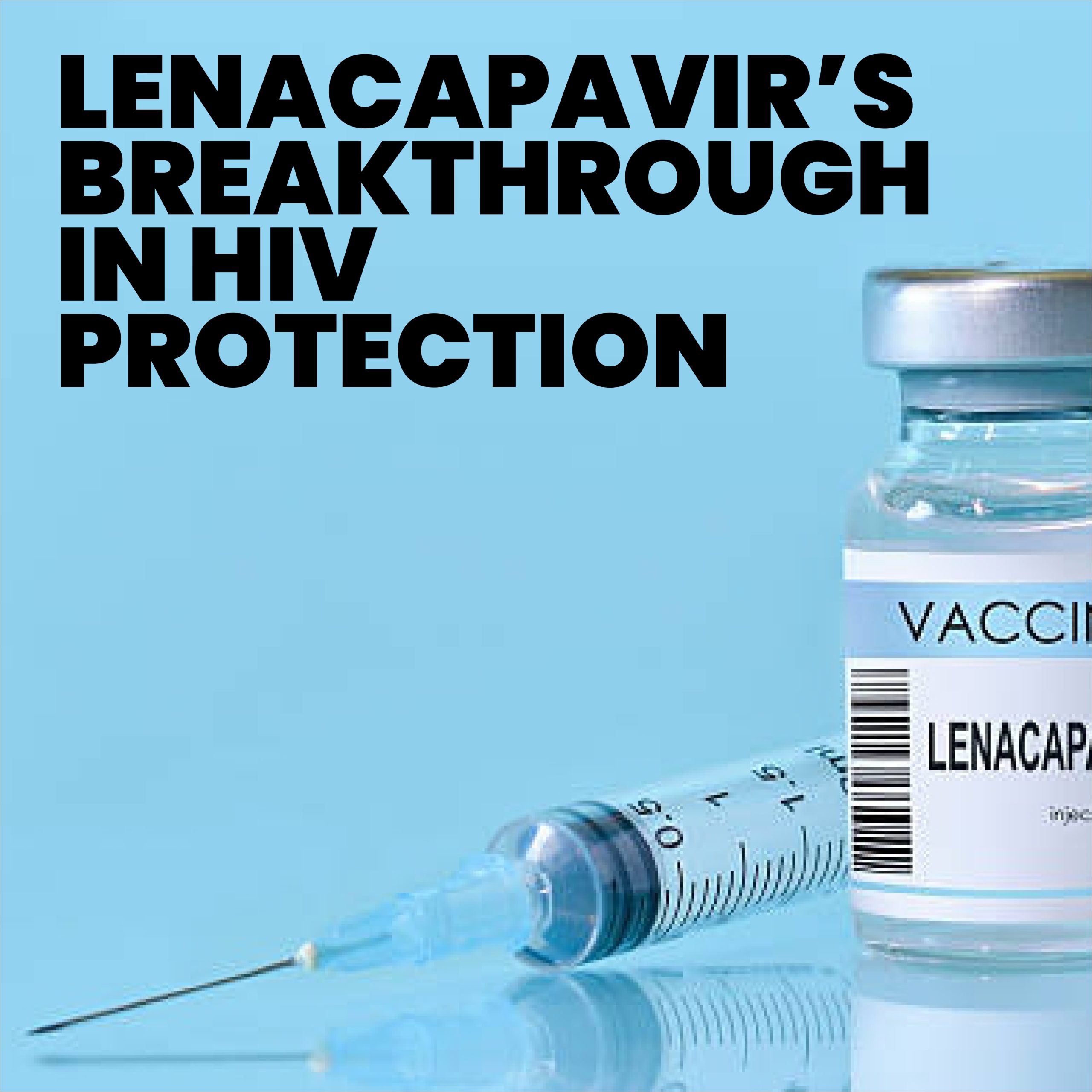Lenacapavir HIV: Introduction
Lenacapavir HIV has rapidly become one of the most discussed innovations in HIV prevention. As a long-acting injectable administered twice a year, it offers a practical alternative to daily oral pre-exposure prophylaxis (PrEP) for people at substantial risk of acquiring the virus. South Africa’s regulatory approval and planned rollout have placed the country at the center of an important public-health experiment: can a long-acting product overcome adherence barriers and reduce new infections at scale? This article lays out seven compelling reasons — clinical, programmatic, social, and economic — that explain why Lenacapavir HIV could be a genuine game-changer in the global effort to prevent HIV.
Lenacapavir HIV: A Convenient, Long-Acting Prevention Option
The most obvious advantage of Lenacapavir HIV is convenience. Daily pills require users to integrate medication into their everyday routines, which can be difficult for people with unstable schedules, limited privacy, or concerns about stigma. A twice-yearly injectable dramatically lowers that barrier. For many users, an injection every six months eliminates the daily reminder of HIV risk and simplifies logistics around refills and pharmacy access.
From the health-system perspective, fewer routine visits can improve clinic flow and free staff time for other preventive services. Semi-annual encounters also allow healthcare providers to combine testing, counselling, and other sexual health services into a single appointment, creating efficiency gains that benefit both patients and programs.
Lenacapavir HIV: Robust Pharmacology and a Novel Mechanism
Lenacapavir HIV’s pharmacology distinguishes it from most existing prevention agents. The drug targets the HIV capsid protein, an essential structural component required for the virus to assemble and replicate. By interfering with capsid function, the medication prevents the virus from successfully replicating after exposure.
The formulation is engineered for slow release, maintaining protective concentrations in tissues for months after administration. This durable pharmacokinetic profile provides the biological basis for biannual dosing and reduces the reliance on perfect daily adherence — a major limitation of oral PrEP for many populations.
Lenacapavir HIV: Demonstrated Efficacy in Clinical Trials
Clinical studies for long-acting products have focused not only on safety but also on real-world effectiveness in preventing infection. Lenacapavir HIV has demonstrated strong efficacy in controlled trials and extension studies, showing substantial reductions in incident infections among participants who received the injectable compared with historical controls and, in some study designs, active comparators.
Importantly, efficacy is tightly linked to appropriate screening and monitoring: ensuring people are HIV-negative prior to each injection and providing clear pathways to diagnostic testing if a person has symptoms between doses. When integrated into well-run programs, trial evidence suggests significant protective benefit.
Lenacapavir HIV: Reaching High-Risk and Underserved Populations
Prevention impact depends on reaching the people who are most likely to acquire HIV. Lenacapavir HIV is particularly well suited to populations facing non-clinical barriers to daily pills — young women in high-incidence settings, sex workers, men who have sex with men, transgender people, and highly mobile individuals. For those who face stigma when taking daily medication or who have unpredictable lives that make daily adherence challenging, a long-acting injectable can provide discreet, reliable protection.
Furthermore, delivering injections in clinics or community venues creates opportunities for integrated services like STI screening, contraception, and linkage to treatment if an infection is detected. With careful community engagement and accessible delivery models, the product can be targeted to groups where it will have the greatest population-level effect.
Lenacapavir HIV: Programmatic Advantages and Delivery Flexibility
Rolling out a twice-yearly injectable requires different programmatic thinking than scaling daily pills. Scheduling systems, inventory management, and follow-up mechanisms must be adapted to ensure doses are given on time. However, the relative infrequency of administration can simplify supply chains and reduce the recurrent costs associated with monthly or quarterly medication distribution.
Delivery models can be flexible: facility-based clinics, mobile outreach teams, and community distribution points can all play a role. Task-shifting to trained nurses or community health workers can expand access, while digital reminders and peer navigators can reduce missed appointments. This flexibility makes the drug adaptable to both urban clinics and rural outreach programs.
Lenacapavir HIV: Safety Profile and Monitoring Needs
Safety data indicate that most adverse events associated with the injectable are manageable. Injection-site reactions are among the most frequently reported effects and are generally mild or moderate. Systemic side effects occur less commonly but must be monitored. Crucially, health systems must ensure robust HIV testing before each dose to avoid inadvertent administration to people with undiagnosed infection, which could increase the risk of resistance.
Implementing active pharmacovigilance — including routine adverse event reporting and resistance surveillance — will be essential during scale-up. Building these systems can strengthen overall treatment and prevention programs and reassure both providers and users about the product’s safety.
Lenacapavir HIV: Cost-Effectiveness and Health-Economic Considerations
Cost considerations will shape how widely and quickly the injectable is adopted. While the unit price of a long-acting product may be higher than a month’s supply of oral medication, the economics change when delivery frequency, adherence gains, and infections averted are taken into account. Fewer clinic visits, reduced need for daily drug supply chains, and the potential to prevent costly lifelong antiretroviral treatment for new infections all factor into cost-effectiveness calculations.
Negotiated pricing, pooled procurement through regional consortia, and donor support can lower the entry price for resource-limited health systems. Equity-focused financing mechanisms will also be important to ensure that early access is not limited to wealthy urban populations.
Lenacapavir HIV: Equity, Ethics, and Community Engagement
Ethical program design demands that new prevention options reach those most in need. Outreach to marginalized communities, protection of confidentiality, and informed consent processes all matter. Community engagement is central: involving community stakeholders in planning, demand creation, and rollout ensures messaging is culturally appropriate and helps build trust.
Transparent allocation strategies for initial limited supplies are necessary to avoid perceptions of unfairness. Targeting high-incidence districts and key populations can maximize public-health impact while adhering to principles of equity.
Lenacapavir HIV: Potential Challenges and Mitigation Strategies
Despite its promise, the injectable’s success is not guaranteed. Potential challenges include supply-chain disruptions, stockouts, incomplete coverage of target populations, and the risk of resistance if people receive injections while unknowingly HIV-positive. Additionally, behavioral factors — such as risk compensation — could offset some benefits if not addressed through counselling and combination prevention approaches.
Mitigation strategies include strong pre-injection testing protocols, robust community outreach, flexible delivery models to reach underserved areas, and investment in monitoring systems. Integrating the product into combination prevention packages (condoms, testing, treatment-as-prevention) will also preserve and amplify its benefits.
Lenacapavir HIV: South Africa’s Role and Regional Implications
South Africa’s early approval and planned rollout give the country an opportunity to generate implementation lessons for the continent. Its large public-health infrastructure and experience with ART scale-up position it to test different delivery models, procurement mechanisms, and community-engagement approaches. Lessons learned in South Africa can guide neighboring countries and regional procurement efforts, potentially accelerating access across sub-Saharan Africa.
Regional collaboration on procurement, regulatory harmonization, and data-sharing will be important for maximizing the public-health benefits of long-acting prevention.
Lenacapavir HIV: FAQs
1. What is Lenacapavir HIV? It is a long-acting injectable medication designed for pre-exposure prophylaxis, administered twice yearly to reduce the risk of HIV acquisition.
2. How does Lenacapavir HIV work? The drug targets the viral capsid protein, disrupting viral replication and reducing the likelihood that exposure will lead to a productive infection.
3. Who should consider Lenacapavir HIV? People at higher risk who struggle with daily pill adherence — including young women in high-incidence areas, sex workers, and mobile populations — may benefit most.
4. Are there side effects? Injection-site reactions are the most common; systemic effects are less frequent. Health providers should counsel patients and monitor adverse events.
5. Will the injectable replace oral PrEP? No. It will complement existing options. A diversified prevention portfolio allows individuals to choose the method that fits their life circumstances.
Lenacapavir HIV: Conclusion
Lenacapavir HIV represents an important evolution in HIV prevention. By combining a novel mechanism of action with a long-acting, twice-yearly dosing schedule, it addresses several barriers that have limited the impact of daily oral PrEP. Success will depend on thoughtful program design, equitable financing, robust monitoring, and active community engagement. If these pieces come together, the injectable could substantially reduce new infections and broaden prevention choices for millions at risk




